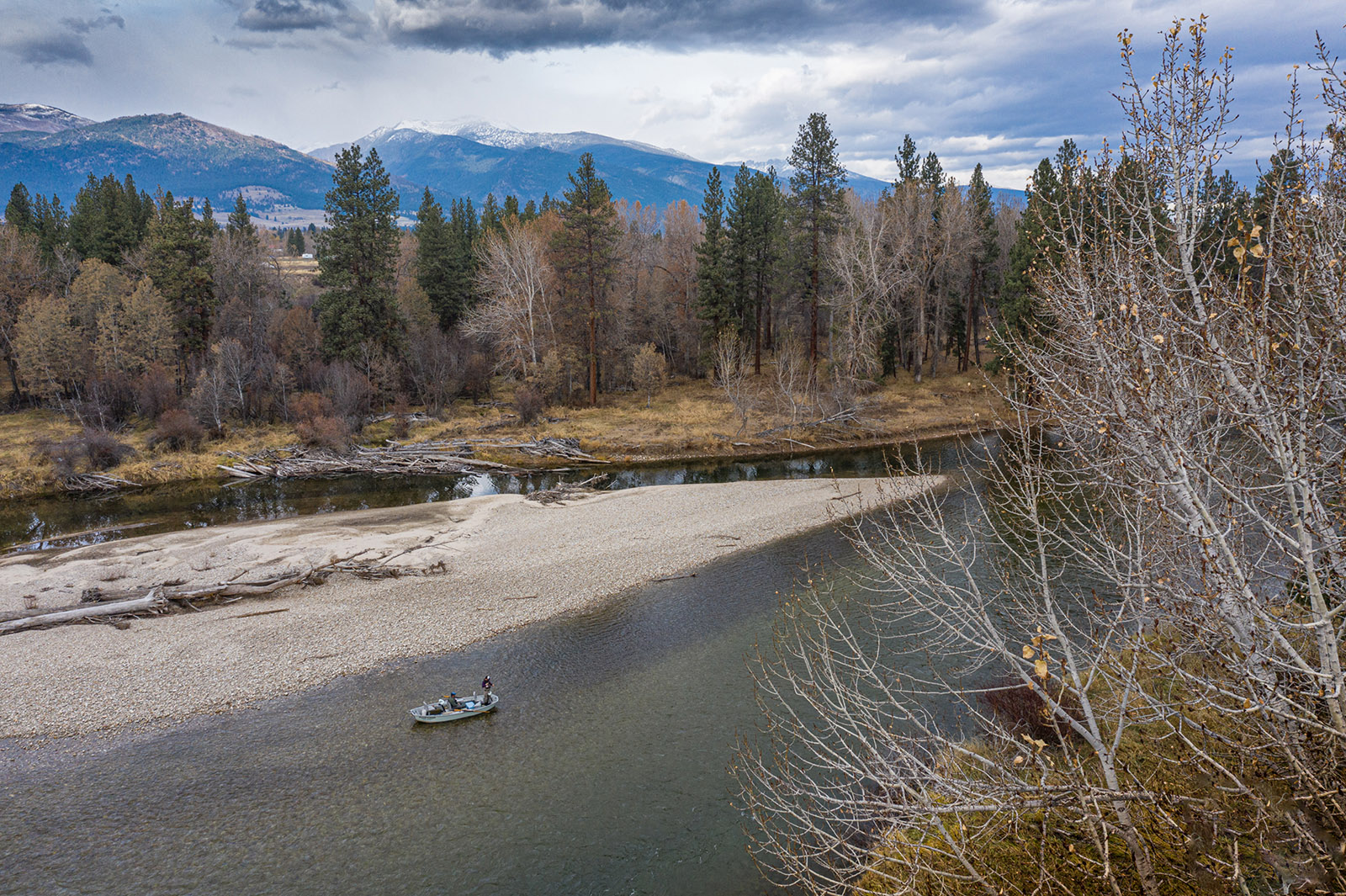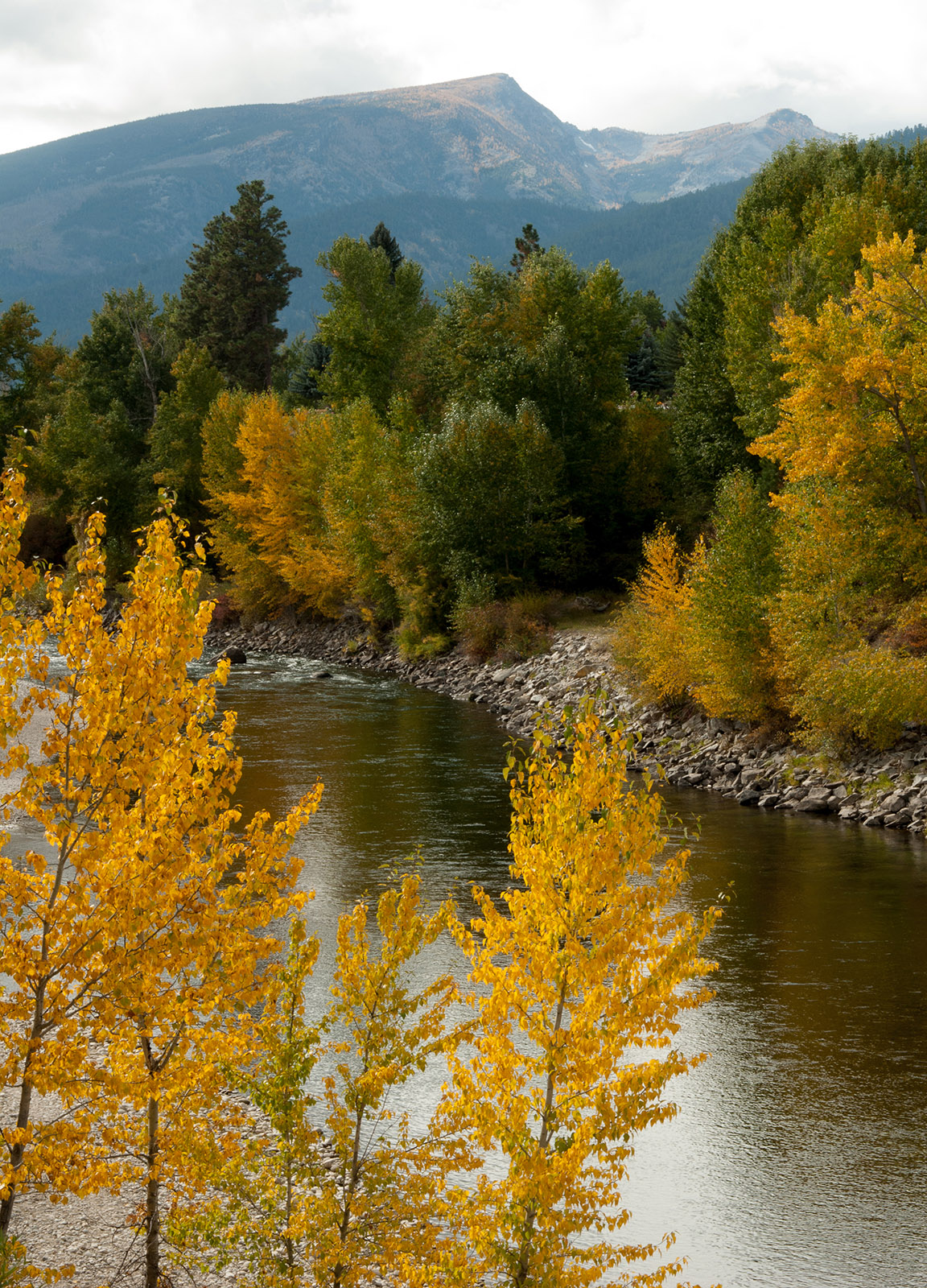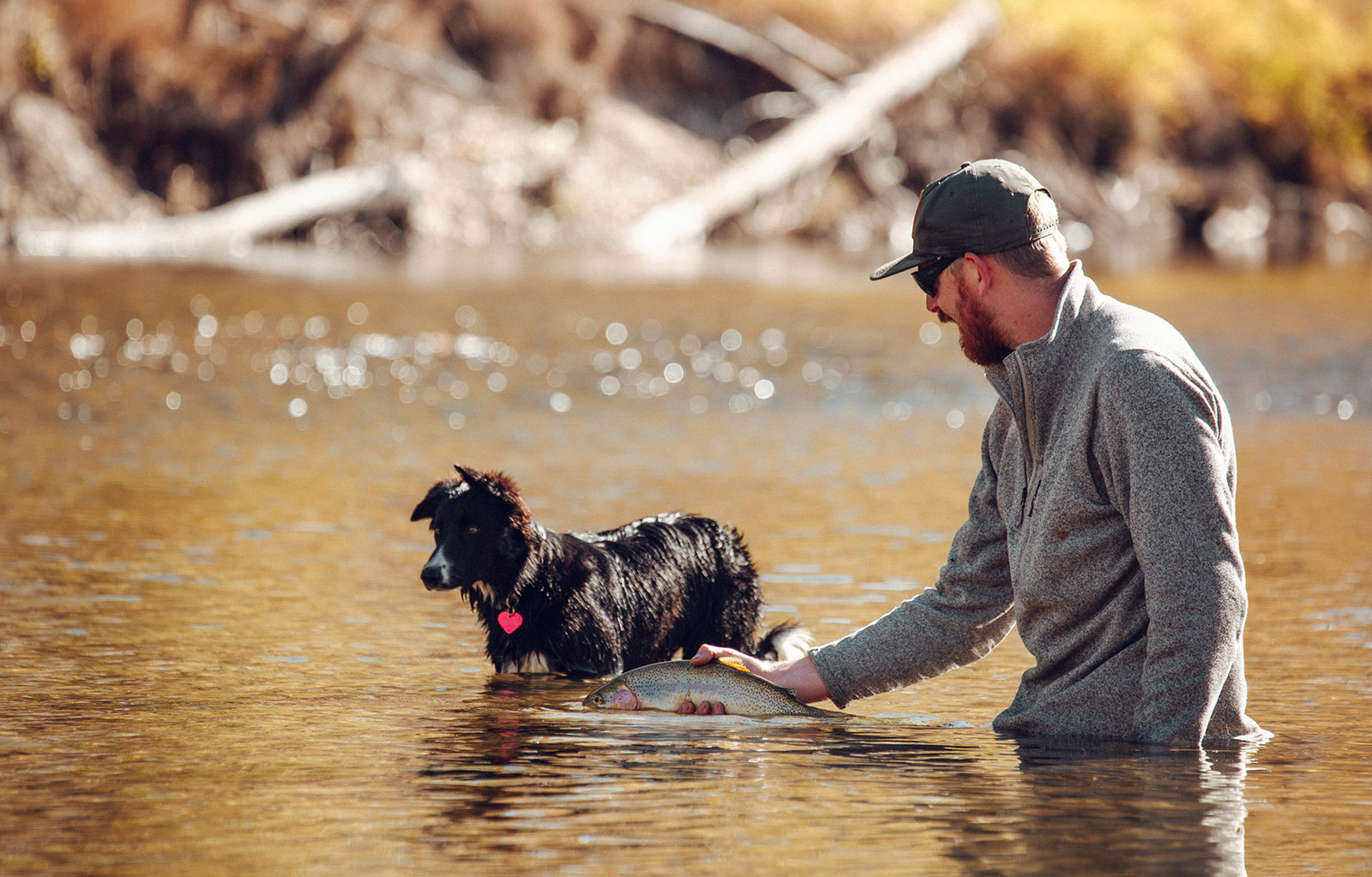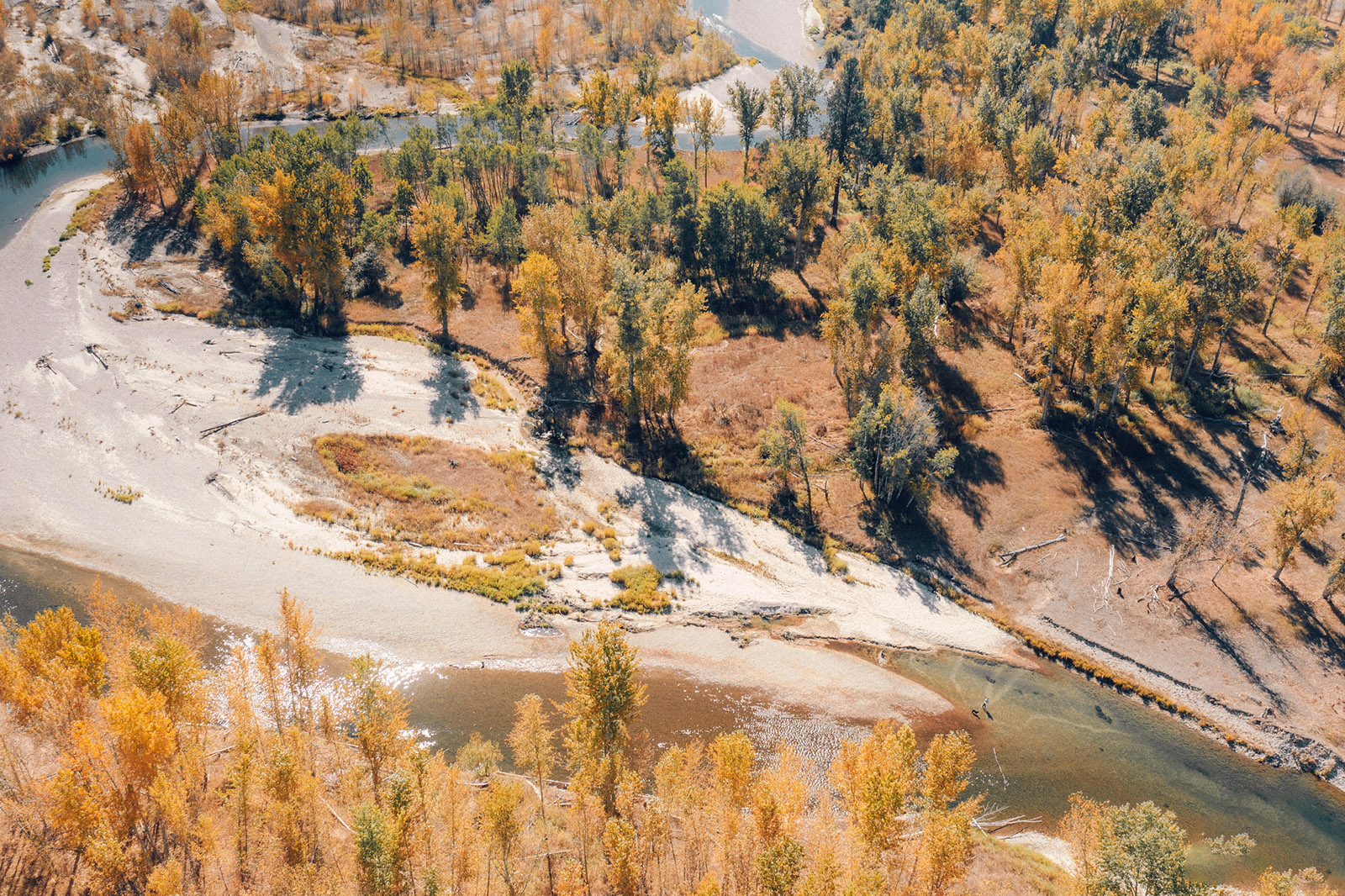Setting Down Roots

by Sam Lungren
Floating through the ages on the Bitterroot River
When the harsh Montana winter finally abates, the bitterroot plant blooms, with a brilliant pink blossom. Montana’s state flower also yields a meaty taproot that served as a critical early-season food source for the Bitterroot Salish tribe, the longtime residents of their eponymous valley. They call it Spet-lum or “place of the bitterroot.”

The Story
The Salish band moved westward into this idyllic space between the Sapphire and Bitterroot ranges in the 1700s under pressure from Plains tribes, themselves under pressure from Midwest tribes and the western expansion of European settlers. The Salish developed an annual cycle of gathering, starting with the bitterroot at winter’s end, on to camas root come summer, and then huckleberries and chokecherries through the fall—all the while hunting elk, moose, sheep, deer, and buffalo, and fishing for westslope cutthroat, bull trout, and mountain whitefish.
Groups of neighboring Nez Perce, Pend Oreille, and Shoshone would visit the valley to harvest bitterroot unmolested, introducing horses to the Salish. Smallpox arrived in the 1780s. The tribe gave the Corps of Discovery permission to encamp at Traveler’s Rest near modern-day Lolo in 1805 before the outsiders crossed the Bitterroot Mountains on their way westward to the Pacific Coast. Meriwether Lewis and William Clark stayed again on their return journey.
The Salish developed an annual cycle of gathering, starting with the bitterroot at winter’s end, on to camas root come summer, and then huckleberries and chokecherries through the fall—all the while hunting elk, moose, sheep, deer, and buffalo, and fishing for westslope cutthroat, bull trout, and mountain whitefish.
Even before the migration into the Bitterroot, a Salish prophet named Xalíqs or “Shining Shirt” predicted the coming of “black robes,” light-skinned men who would teach them new prayers and powerful medicine. Not long after the Corps opened the West, a group of Iroquois who’d trained under the Jesuits arrived in the valley. The Salish sent delegations to Saint Louis on four occasions, asking the prophesized black robes to visit them. In 1839, Father Pierre-Jean DeSmet came, baptizing hundreds of Salish, including Chief Victor or Many Horses. DeSmet returned two years later with more priests and funding to build Saint Mary’s Mission, which still stands on 4th Street in Stevensville.
A symbiosis between Salish and Catholics existed for some time, before diplomats from the East began pushing treaties upon the valley’s occupants. Upon Victor’s death, his son Charlo became chief. In 1889, facing dismal drought, extirpation of their bison, and increasing pressure from the Army, he finally agreed to resettle his band onto the Flathead Reservation 60 miles north.

The Fishing
The Bitterroot is both a tailwater and a freestone river. The East Fork plunges unencumbered out of the mountains around Lost Trail Pass, flowing fast and tannic. The West Fork, however, pauses long in Painted Rocks Reservoir to emerge from the dam in a more restrained manner. The two merge into one at Connor, breaking into the broad, iconic valley. Functions of both major types of rivers exist: the B-Root, as many locals call it, often runs rather clear with more consistent water temperature and flow rates than its more tempestuous sister, the Blackfoot. It also stays relatively ice-free and fishable through the winter. That said, the influence of the East Fork, as well as the feeder streams Burnt Fork, Skalkaho, Bass, Bear, Lolo, and other major tributaries, push a massive volume of snowmelt into the mainstem come May and June, driving anglers into the West Fork or over the divide to the Missouri.
Still, the glacier-scraped flat valley provides some of the lowest-gradient stream flow in Western Montana, sometimes giving the sense that you’re fishing a Great Plains tailwater, even an Upper Midwest spring-fed stream—until you look up and up and up to 10,157-foot Trapper Peak climbing into the clouds. The mainstem of the Bitterroot runs 84 miles due north from Connor to Missoula, entering the Clark Fork of the Columbia River at Kelley Island on the west side of town.
The Middle Bitterroot, roughly between the towns of Hamilton to Victor, is the one you’ve seen in pictures. Its long, elegant runs, classic riffles, and towering cottonwoods backed by baked-bread foothills and rugged mountains behind are the stuff of coffee-table books and glossy magazines regarding fly fishing and the Mountain West.
The upper river, generally considered the waters upstream or south of Hamilton, is tight and technical, often the realm of rafts rather than driftboats. The hard corners and overhanging vegetation leave much to be explored even after the daily guide fleet passes through. It’s tough wading but good wading, fast but small water that can make hours and days melt away.
The lower river loses much of its speed and shape. It’s wide, slow, and featureless from a distance, which is of course a boon to the discerning angler. Creek mouths, corners, logjams, and bridges create all the structure a trout needs, especially once the heat of the summer has abated. While trout are fewer here, and northern pike populations healthy, some of the Bitterroot’s largest rainbows and browns are known to lurk in the froggy low end that most anglers seem to ignore.
The Middle Bitterroot, roughly between the towns of Hamilton to Victor, is the one you’ve seen in pictures. Its long, elegant runs, classic riffles, and towering cottonwoods backed by baked-bread foothills and rugged mountains behind are the stuff of coffee-table books and glossy magazines regarding fly fishing and the Mountain West. In fact, much of the (in)famous Yellowstone TV show was filmed here, rather than the Paradise Valley where it’s allegedly set. Good luck trying to get a photo without another angler or boat in it, though.
There are 48,000 residents of Ravalli County, seated in Hamilton, and 122,000 in Missoula County—one of the most populous areas in one of the least populous states. Interstate 93 crosses the ’Root just past the Walmart in Missoula and follows it closely past its source up the East Fork and over Lost Trail Pass. One could argue this is Montana’s most urban trout stream. Montana Fish, Wildlife & Parks ranks the Bitterroot third behind the Bighorn and Madison as its most heavily fished rivers—but the other two are much larger and don’t run through any major cities. Fishing Access Sites are frequent, which spreads out wading pressure, but steer clear of the boat ramps on a summer morning unless you’ve entered Thunderdome before. Dozens of outfitters and hundreds of guides work these waters annually, and competition can be fierce for launches and dry-fly anchorages. All the more reason to fish these waters outside of peak season—particularly in the fall, when the Bitterroot Valley becomes even more aesthetically pleasing.
You might not think such a relatively small stream could sustain all the pressure and attention, but it does.

The Flies
The Skwala stonefly is nearly synonymous with the Bitterroot River. This small, olive, enigmatic cousin to the golden stone and salmonfly emerges much earlier than its relatives or even its own kind higher in the mountains. True believers almost paradoxically begin throwing big foam dry flies among the snow squalls of late winter, with or without visual confirmation of any hatch presence. Bejeweled pre-spawn westslope cutthroat will rise 15 feet vertically from their winter lies to capture this early appetizer before the summer buffet. Long leaders and floating flies will always feel a little silly in a snow-covered landscape, but it’s exactly this anomaly that makes the Bitterroot so iconic.
Tiny tricos littering the backwaters of the lower river signal the beginning of the fall, making a maddening challenge for the float-line fanatic. Of course, anywhere there’s a brown trout there’s a bigger one. That kyped buck likes an aught-sized sculpin more than he does a #20 trico. A proper presentation, a touch a patience for other anglers, and maybe a Salish-Jesuit prayer can yield some of the finest fish in Montana.
